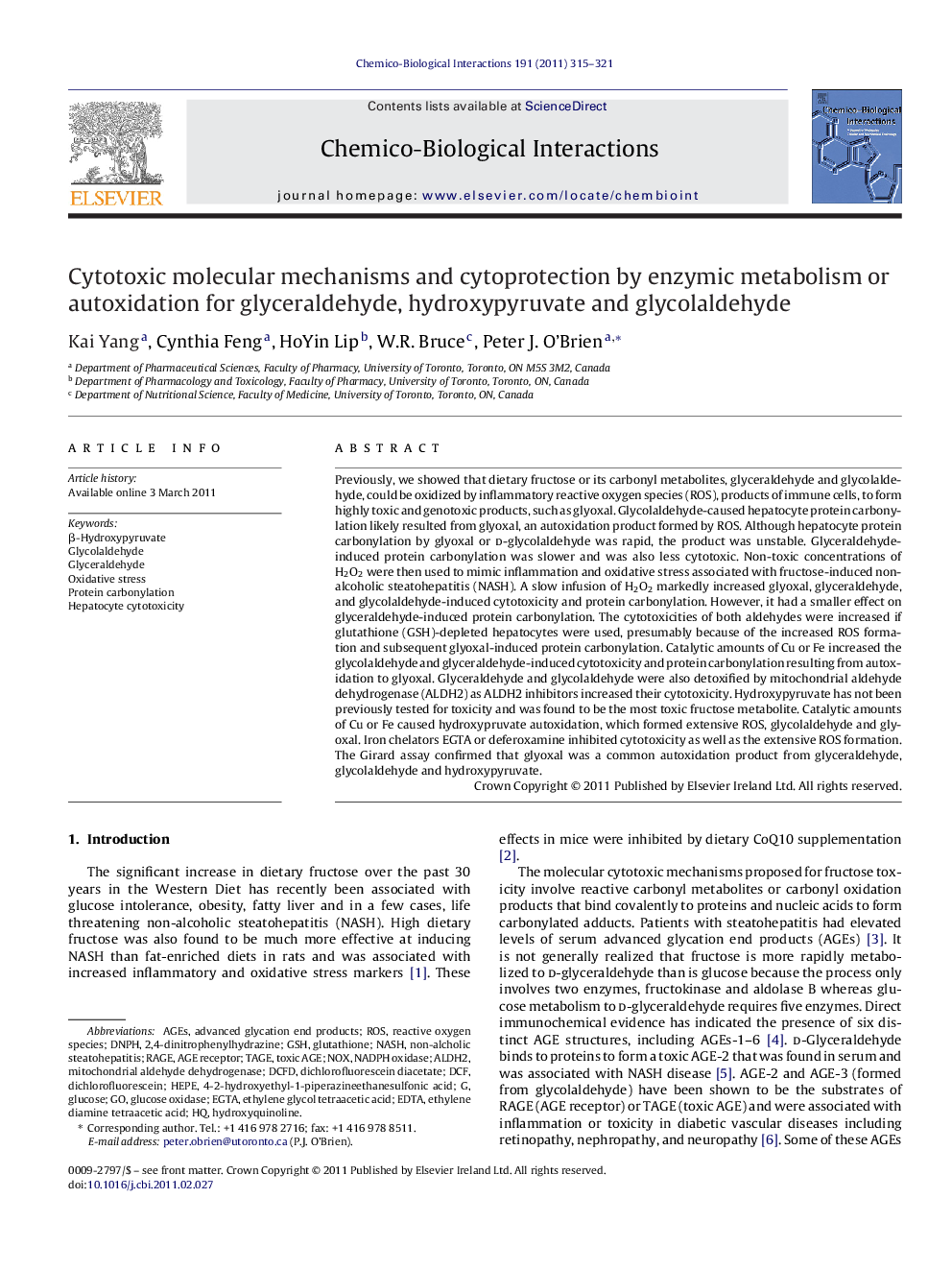| Article ID | Journal | Published Year | Pages | File Type |
|---|---|---|---|---|
| 2580783 | Chemico-Biological Interactions | 2011 | 7 Pages |
Previously, we showed that dietary fructose or its carbonyl metabolites, glyceraldehyde and glycolaldehyde, could be oxidized by inflammatory reactive oxygen species (ROS), products of immune cells, to form highly toxic and genotoxic products, such as glyoxal. Glycolaldehyde-caused hepatocyte protein carbonylation likely resulted from glyoxal, an autoxidation product formed by ROS. Although hepatocyte protein carbonylation by glyoxal or d-glycolaldehyde was rapid, the product was unstable. Glyceraldehyde-induced protein carbonylation was slower and was also less cytotoxic. Non-toxic concentrations of H2O2 were then used to mimic inflammation and oxidative stress associated with fructose-induced non-alcoholic steatohepatitis (NASH). A slow infusion of H2O2 markedly increased glyoxal, glyceraldehyde, and glycolaldehyde-induced cytotoxicity and protein carbonylation. However, it had a smaller effect on glyceraldehyde-induced protein carbonylation. The cytotoxicities of both aldehydes were increased if glutathione (GSH)-depleted hepatocytes were used, presumably because of the increased ROS formation and subsequent glyoxal-induced protein carbonylation. Catalytic amounts of Cu or Fe increased the glycolaldehyde and glyceraldehyde-induced cytotoxicity and protein carbonylation resulting from autoxidation to glyoxal. Glyceraldehyde and glycolaldehyde were also detoxified by mitochondrial aldehyde dehydrogenase (ALDH2) as ALDH2 inhibitors increased their cytotoxicity. Hydroxypyruvate has not been previously tested for toxicity and was found to be the most toxic fructose metabolite. Catalytic amounts of Cu or Fe caused hydroxypruvate autoxidation, which formed extensive ROS, glycolaldehyde and glyoxal. Iron chelators EGTA or deferoxamine inhibited cytotoxicity as well as the extensive ROS formation. The Girard assay confirmed that glyoxal was a common autoxidation product from glyceraldehyde, glycolaldehyde and hydroxypyruvate.
